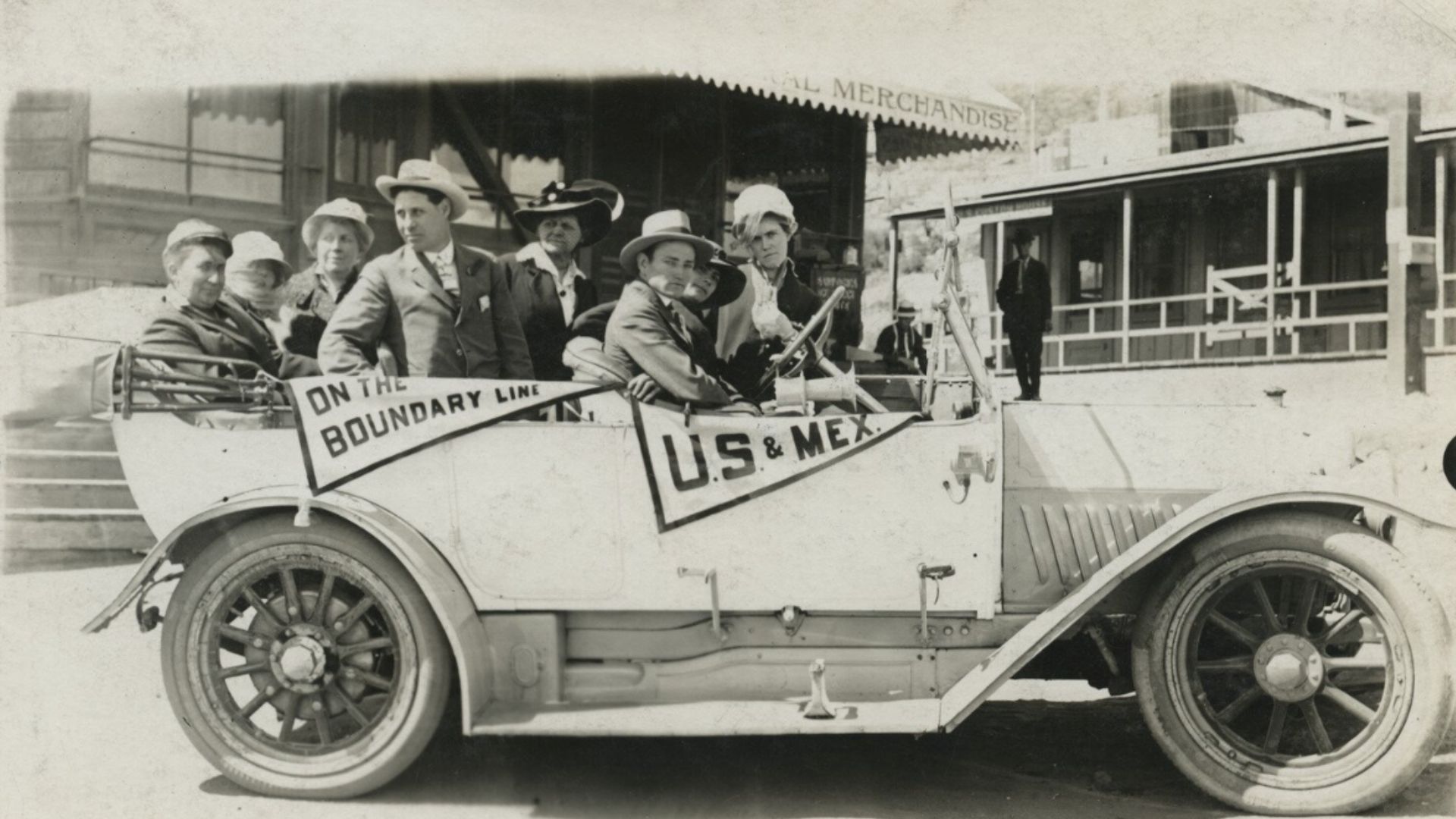View Exhibit
This exhibit was first inspired by the timely opportunity to bridge the histories of two neighboring cities during a period in which the political discourse sought to reduce their historical dynamic. With materials from the Special Collections & Archives at UC San Diego, the exhibit seeks to convey the nuanced meeting of cultures as curious, traveling individuals from both the U.S. and Mexico converged in one city—Tijuana, only a few miles south of this campus—to conflate the mythos of the untamed West and the emerging cosmopolitan appeal of “Old Mexico.”
The pictures depict American travelers enjoying the simulacra of the West, afforded to them by a burgeoning and in-development border city. In some of the cases, viewers will find letters from these travelers sent back home to tell of the nostalgic entertainment available in Tijuana and the varying amusements they enjoyed. In others, pictures depict these individuals immersing themselves in costume and evoking their fantasies of the frontier.
Viewers will also find how Tijuana, as an entity, advertised itself to encourage international tourism and nourish its image as a space of wanton entertainment. Although the visitors depicted here—both international and domestic—exoticized Tijuana, their curiosity drove them to visit and explore the foreign and the unknown. Today, the city remains a location wherein the international human experience of inquiry and travel is shared. It is the hope of the exhibit to demonstrate with this storied showcase of the history of U.S. tourism to Tijuana the value of looking to your neighbors and traveling as a political act to dispel prejudice and fear and, in their place, champion knowledge and wonder.
From its beginning, Tijuana was more accessible from the north than the south. When Tijuana was founded the nearest Mexican town 150 miles away, Ensenada, was only accessible by air or water. The city was a popular destination for U.S. tourists who wanted to see “Old Mexico.”
Contact:

